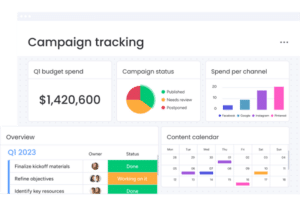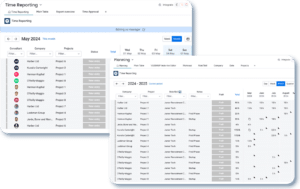Introduction
Why Digital Transformation is Non-Negotiable in Today’s Business Climate
In an era where technology is reshaping industries and consumer expectations, digital transformation is no longer a luxury; it’s a necessity for survival. Companies are scrambling to adapt, and those who lag behind risk becoming obsolete. However, digital transformation is not a plug-and-play solution. It requires a comprehensive approach, and at the core of this approach lies the importance of building a robust integration strategy for digital transformation.
What is Digital Transformation?
Digital transformation involves the integration of digital technologies into all aspects of a business, fundamentally changing how you operate and deliver value to customers. It’s more than just a technological shift; it’s a cultural change that requires organizations to continually challenge the status quo, experiment, and adapt to new methods. The long-term goal is to create an agile, responsive organization that can thrive in an ever-changing digital landscape.
The Crucial Role of an Integration Strategy in Digital Transformation
Many businesses embark on the journey of digital transformation with a focus solely on individual technologies like cloud computing, AI, or IoT. However, they often overlook a crucial element: how these technologies will interact with each other and with existing systems. That’s where a robust integration strategy comes into play. Building a robust integration strategy for digital transformation ensures that all technological components work harmoniously, optimizing data flow, improving efficiency, and ultimately, achieving the organizational goals.
What to Expect from This Blog Post
In this blog post, we will dive deep into the key components and steps involved in building a robust integration strategy for digital transformation. We will cover everything from aligning your strategy with business objectives to the nitty-gritty of implementation and monitoring. Whether you are a C-suite executive, an IT professional, or a business manager interested in leveraging technology for organizational success, this blog post aims to equip you with the knowledge and insights needed to navigate the complexities of digital transformation effectively.
Importance of a Robust Integration Strategy
The Challenges of Digital Transformation
Digital transformation is an all-encompassing journey that introduces a host of challenges. From technology adoption and workflow alterations to culture change and data management, the process is intricate. While many organizations initiate digital transformation with enthusiasm, they often encounter hurdles that can slow down or even halt the progress. This is largely due to a lack of a cohesive plan that aligns the myriad pieces of the transformation puzzle. And that’s precisely why building a robust integration strategy for digital transformation is critical.
The Linchpin of Transformation: Integration
When we talk about digital transformation, we often focus on technologies like cloud services, big data, AI, and IoT. While these are vital elements, they are merely pieces of a larger puzzle. To unlock the true potential of digital transformation, these technologies need to be interconnected and integrated smoothly with existing systems and processes.
Building a robust integration strategy for digital transformation acts as the linchpin that holds all these elements together. It orchestrates the interaction between disparate systems, ensuring that data flows seamlessly across the organization. This, in turn, enables real-time decision-making, enhances customer experiences, and drives operational efficiencies.
Driving Business Objectives Through Integration
One of the most crucial aspects of an integration strategy is its ability to align with business objectives. Be it boosting sales, enhancing customer service, or streamlining operations, every component of your integration strategy should serve a defined business goal. This alignment not only ensures that you’re on the right track but also helps in quantifying the ROI of your digital transformation efforts.
Creating a Foundation for Future Innovations
In an ever-evolving digital landscape, flexibility and scalability are not just buzzwords; they are necessities. A well-crafted integration strategy doesn’t just solve today’s problems; it lays the groundwork for future innovations. By establishing a robust, scalable, and flexible integration architecture, organizations can effortlessly adapt to emerging technologies and market demands, making the journey of digital transformation less tumultuous and more rewarding.
Omnitas Newsletter
Sign up for our monthly newsletter to stay up-to-date on our latest blog articles, videos and events!
Thank you!
You have successfully joined our subscriber list.
Key Components of an Integration Strategy
Building a robust integration strategy for digital transformation requires a multidimensional approach. While there’s no one-size-fits-all model, certain core elements should be a part of any effective integration strategy. Let’s delve into these components to better understand what makes an integration strategy truly robust.
Alignment with Business Objectives
The first and foremost step in building a robust integration strategy for digital transformation is aligning it with your overarching business objectives. Whether your goals involve increasing revenue, enhancing customer experience, or optimizing internal processes, your integration strategy should serve as a roadmap to achieve these objectives.
When setting out, ask yourself and your team the following questions:
- What are we trying to achieve with digital transformation?
- How does integration serve these goals?
- What key performance indicators (KPIs) will we use to measure success?
By answering these questions, you can create a tailored strategy that is intrinsically linked to your business objectives.
Data Governance
In the age of information, data governance is not just an option; it’s a necessity. Your integration strategy should outline clear guidelines for data integrity, privacy, and security. The strategy should also specify how data will be managed, stored, and transferred between various systems and platforms.
Choice of Integration Platforms
The market offers a myriad of integration platforms tailored for various needs. Your strategy should outline the criteria for selecting these platforms. Whether you are leaning towards using established platforms or considering custom solutions, the platform should meet your organization’s unique demands and compliance standards.
Scalability & Flexibility
A robust integration strategy must be scalable to accommodate future growth and flexible enough to adapt to technological changes. Considering that digital transformation is a long-term commitment, your integration strategy should allow room for adjustments and expansions without requiring a complete overhaul.
Stakeholder Involvement
Integration affects various departments across your organization—from Sales and Marketing to Operations, IT, and HR. As such, your strategy should be developed in consultation with stakeholders from these departments. Their insights can offer valuable perspectives on practical needs, potential bottlenecks, and how the strategy can be optimized for cross-departmental benefits.
Monitoring & Analytics
Last but not least, building a robust integration strategy for digital transformation must include a component for ongoing monitoring and analytics. Define what metrics will be tracked and how performance will be analyzed to ensure that the integration is delivering the expected results. Regular monitoring allows for timely adjustments and fine-tuning, ensuring long-term success.

Steps to Build an Integration Strategy
Building a robust integration strategy for digital transformation isn’t an overnight task. It requires thorough planning, execution, and monitoring. To simplify this complex process, it’s helpful to break it down into a series of manageable steps. Here are the key stages involved:
Assessment & Planning
The first step in building a robust integration strategy for digital transformation is assessing your current technology landscape. This involves identifying the various systems, platforms, and technologies currently in use and how they interact with each other. The assessment should also extend to identifying existing inefficiencies, data silos, or areas that lack automation.
Once you have a clear picture, the planning phase begins. This is where you outline your objectives, budget constraints, and timeline. Planning also involves deciding which parts of the organization will be impacted and preparing for the potential challenges that might arise during the integration process.
Consult with Stakeholders
Since integration touches on various facets of the organization, it’s crucial to involve key stakeholders in the process. Hold consultations with departments such as Sales, Marketing, Operations, IT, and HR to gather insights into their unique needs, challenges, and expectations from the integration process. This collaborative approach ensures that the strategy is well-rounded and caters to the requirements of the entire organization.
Technology Selection
After gathering insights from stakeholders and defining your objectives, the next step is selecting the technologies that will make up your integration landscape. Criteria to consider may include compatibility, scalability, security features, and cost. Whether you’re considering well-known platforms or custom solutions, make sure they align with your strategic goals.
Implementation
The actual implementation phase is where your integration strategy starts to come alive. This involves setting up the chosen technologies, configuring settings, and mapping out data flows between systems. Best practices here involve starting with a pilot program to test the integration on a smaller scale before a full-fledged rollout.
Testing & Validation
Once the implementation is complete, rigorous testing is imperative to ensure that everything is functioning as expected. This is also the phase to validate that the integration aligns with your business objectives. Any discrepancies or issues should be ironed out before proceeding to the next step.
Deployment & Monitoring
After successful testing and validation, the next step is full-scale deployment. However, building a robust integration strategy for digital transformation doesn’t end at deployment. Ongoing monitoring is essential to track performance, identify issues, and make iterative improvements. This enables your organization to adapt to new challenges and opportunities, ensuring the long-term success of your digital transformation efforts.
Conclusion
Digital transformation is a journey, not a destination. It’s a complex, multi-faceted initiative that involves numerous technologies, processes, and stakeholders. However, at the heart of this intricate web lies the critical element of integration. As we’ve discussed in this blog post, building a robust integration strategy for digital transformation is a foundational step that can make or break your transformation efforts. From aligning with business objectives to choosing the right technologies and ensuring stakeholder involvement, a well-crafted integration strategy serves as the glue that binds all elements together. It allows your organization to function as a cohesive, agile entity capable of adapting to the ever-changing digital landscape.
If you found this article helpful and would like to stay up to date with similar content, we encourage you to subscribe to our monthly newsletter. For organizations looking to embark on their digital transformation journey, don’t hesitate to book an intro call with one of our experts. We offer insights, advice, implementation and actionable steps tailored to your specific needs, setting you on the path to a successful and enduring digital transformation.
























